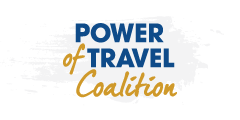Travel Industry, Security Experts Unveil Roadmap to New Air Travel Security Screening System in U.S.

Creation of Trusted Traveler Program, Limit on Checked Bag Fee at Heart of Proposal to Improve Security, Streamline Process for Travelers
The U.S. Travel Association and a panel of travel and security experts today unveiled a groundbreaking plan to improve security at America’s airports and reduce the burden on travelers. Among the most notable recommendations are the creation of a trusted traveler program and a requirement that travelers be allowed to check at least one bag at no additional cost to the ticket price as a means to reduce the amount of luggage going through the security checkpoint.
The need for reform was made especially clear by recent research revealing that travelers are avoiding two to three trips per year due to unnecessary hassles associated with the security screening process. These avoided trips come at a cost of $85 billion and 900,000 jobs to the American economy.
The recommendations, the culmination of a year-long analysis to remake aviation security screening, were issued in a report titled “A Better Way: Building a World Class System for Aviation Security,” and call on Congress to own responsibility for improving the current system through effective policy decisions.
“The country that put a man on the moon, invented the Internet and creates daily innovations in manufacturing can and must do better in screening passengers and improving our air travel experience,” said Roger Dow, president and chief executive officer of the U.S. Travel Association. “Air travel is the gateway to commerce and an improved experience is directly tied to job creation and a stronger economy.”
The panel was chaired by former Department of Homeland Security Secretary Tom Ridge, former Congressman Jim Turner and Sam Gilliland, president and chief executive officer of Sabre Holdings.
In helping U.S. Travel introduce the report, former Secretary Ridge said: “A strong aviation security screening system must feature several characteristics, including efficient methods of deterring and interdicting terrorists and criminals; tailored security based upon risk assessment; frequent, clear communication with the traveling public; and cost-effective use of resources.”
Rooted in the diverse professional and political viewpoints of the panelists, the group did not always find consensus in how to address the difficult challenges. Among the panel’s recommendations in the report:
- Implement a risk-based trusted traveler program. Congress should authorize the Transportation Security Administration (TSA) to implement a new, voluntary, government-run trusted traveler program that utilizes a risk-based approach to checkpoint screening, with the goal of refocusing resources on the highest risk passengers;
- Improve preparation of travelers. Industry stakeholders should work with TSA to improve their education and communication on security rules and regulations, targeting locations and sources that travelers are likely to review as they book or prepare for a trip;
- Encourage fewer carry-on bags. The Department of Transportation (DOT) should issue regulations requiring airlines to allow passengers one checked bag as part of their base airfare and standardize existing rules covering the quantity and size of items that can be carried onto an airplane;
- Reduce duplicative TSA screening for international arrivals. DHS should enable certain low-risk passengers who are traveling to another domestic airport to forego checked baggage and passenger screening upon landing in the U.S.;
- Expand trusted traveler programs to qualified international passengers. DHS should expand access to international trusted traveler programs for international passengers entering the U.S., as well as lead efforts to establish a multinational network of streamlined entry procedures for low-risk travelers;
- Give TSA authority over the entire checkpoint area. Congress should immediately act to clear up confusion over “ownership” of commercial aviation security and authorize TSA to control the entire security checkpoint starting at the beginning of the security lines and ending after a traveler exits the screening area;
- Develop a comprehensive technology procurement strategy. TSA, in collaboration with technology vendors and the travel community, should develop a comprehensive strategy for implementing necessary checkpoint technology capabilities. Congress should provide multi-year funding plans for TSA to execute this strategy;
- Implement well-defined risk management processes. The Administration should convene an external panel of experts with appropriate security clearances to review TSA aviation security programs, assess the risk each is designed to mitigate and develop metrics for measuring progress to lessen that risk.